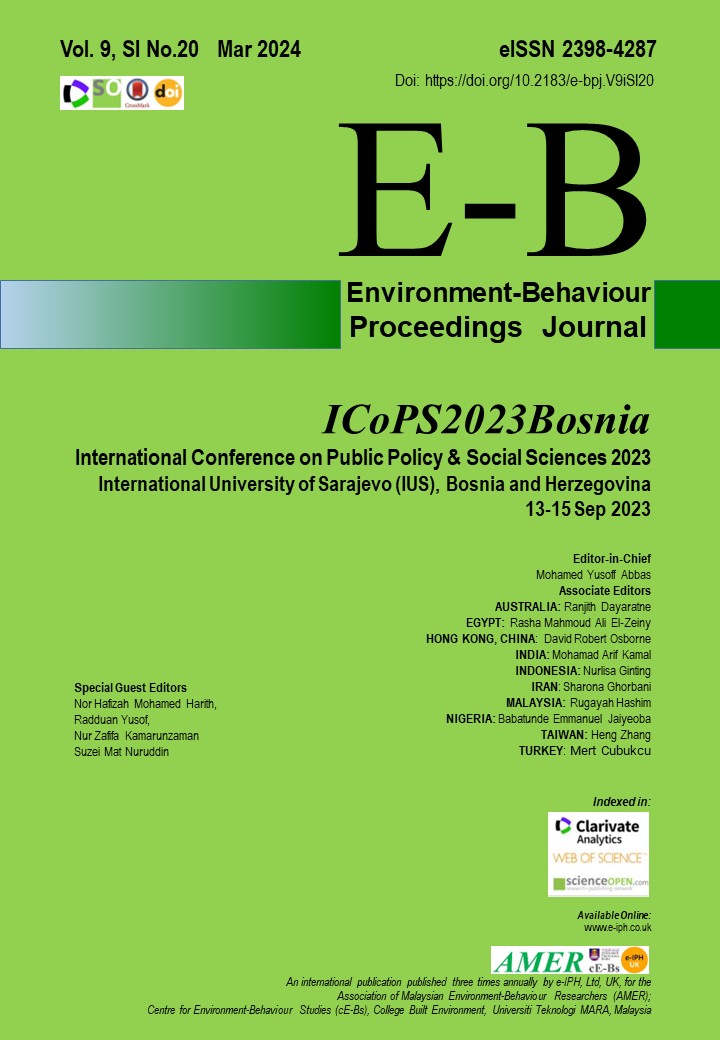Designing Creative Music Education Materials for School Children in Malaysia: Implication for policy and teaching practices
DOI:
https://doi.org/10.21834/e-bpj.v9iSI22.5806Keywords:
Music Education, Musical Creativity, Creative ThinkingAbstract
The Malaysian Ministry of Education aspires to produce knowledgeable, creative and innovative music pupils, teachers, educators, researchers, material writers, and curriculum designers. Thus, there is an urgency to advocate new and current ways of attracting 21st century pupils to learn music. This study involves designing educational music teaching materials and approaches. It also evaluates the effectiveness of musical creativity, engagement, and learning outcomes through musical experience, music composition, and music appreciation. The findings of this study provide insights on ways that will help policymakers, curriculum designers, and music teachers in Malaysia to develop quality teaching and learning materials for future music education.
References
Abril, C. R., & Bannerman, J. K. (2015). Perceived Factors Impacting School Music Programs: The Teacher’s Perspective. Journal of Research in Music Education, 62(4), 344–361. https://doi.org/10.1177/0022429414554430 DOI: https://doi.org/10.1177/0022429414554430
Amir Hamzah (2020) MAME Malaysia Association for Music Education Buletin. https://a782f9b0-f7b4-4873-9094-a71ae2c3dd19.filesusr.com/ugd/06d22f_b877bcff29254cf3b5464c8aacf015eb.p
Anderson, W. (2013). Integrating music into the elementary classroom. Cengage Learning.
Barrett, J. R. (2020). Policy at the Intersection of Curriculum and Music Teacher Agency. Music Educators Journal, 107(1), 37–42. https://doi.org/10.1177/0027432120939646 DOI: https://doi.org/10.1177/0027432120939646
Csikszentmihalyi, M. (2014). The systems model of creativity: The collected works of Mihaly Csikszentmihalyi. Springer Science + Business Media. https://doi.org/10.1007/978-94-017-9085-7 DOI: https://doi.org/10.1007/978-94-017-9085-7
Fairfield, S. M. (2010). Creative thinking in elementary general music: A survey of teachers’ perceptions and practices. Retrieved from Available from ProQuest Dissertations and Theses database. (UMI No. 3439183)
Hourigan R. (2011). Race to the Top: Implications for professional development in arts education. Arts Education Policy Review, 112, 60–64. DOI: https://doi.org/10.1080/10632913.2011.546679
Hellman, D. S. (2020). Shaping Music Education Policy through Insight, Collaborating, Deliberating, and Strategizing. Music Educators Journal, 107(1), 55–61. https://doi.org/10.1177/0027432120940792 DOI: https://doi.org/10.1177/0027432120940792
Ismail, M. J., Chiat, L. F., & Ying, L. F. (2023). An Active Learning Study: Mastering Music Coordination Skills through Kompang and Dalcroze Eurhythmics among Primary Students. International Journal of Instruction, 16(1). DOI: https://doi.org/10.29333/iji.2023.16111a
Jones, P. and West, E. (2009), Teacher Education: Reflections upon teacher education in severe difficulties in the USA: shared concerns about quantity and quality. British Journal of Special Education, 36: 69-75. https://doi.org/10.1111/j.1467-8578.2009.00429.x DOI: https://doi.org/10.1111/j.1467-8578.2009.00429.x
Kementerian Pendidikan Malaysia (2017) DSKP KSSR Semakan Tahun 2 Pendidikan Muzik. http://bpk.moe.gov.my/index.php/terbitan-bpk/kurikulum-sekolah-rendah/category/42-dskp-tahun-2-semakan
Kos, R. P. (2018). Policy and the K–12 Music Teacher: A Literature Review. Update: Applications of Research in Music Education, 37(1), 20–29. https://doi.org/10.1177/8755123318758837 DOI: https://doi.org/10.1177/8755123318758837
Koutsoupidou, T. (2010). Self-assessment in generalist preservice kindergarten teachers’ education: Insights on training, ability, environments, and policies. Arts Education Policy Review. https://doi.org/10.1080/10632911003626937 DOI: https://doi.org/10.1080/10632911003626937
Major M. L. (2013). How they decide: A case study examining the decision-making process for keeping or cutting music in a K–12 public school district. Journal of Research in Music Education, 61, 5–25. DOI: https://doi.org/10.1177/0022429412474313
MAME (2021) Bulletin MAME 2021 Jilid 4 Isu 2 https://www.mamebaru.org/_files/ugd/032d90_7adfc17675e847148dc354e4797996db.pdf?index=true
Patrick Schmidt, “Reinventing from Within: Thinking Spherically as a Policy Imperative in Music Education,” Arts Education Policy Review 110, no. 4 (2009): 39–47. DOI: https://doi.org/10.3200/AEPR.110.4.39-47
Shaw, R. D. (2020). How Music Education Policies Come to Be and What Teachers Can Do. Music Educators Journal, 107(1), 62–67. https://doi.org/10.1177/0027432120945011df DOI: https://doi.org/10.1177/0027432120945011
Utusan, M. (2022) Mansuhkan Subjek Pendidikan Muzik jika Tiada Guru Opyen Muzik. https://www.utusan.com.my/rencana/forum/2022/12/mansuhkan-pendidikan-muzik-jika-tiada-guru-opsyen/
Webster, P. R. (2009). Children as creative thinkers in music. The Oxford handbook ofmusic psychology, 421-428.
Downloads
Published
How to Cite
Issue
Section
License
Copyright (c) 2024 Juriani Jamaludin, Harrinni Md Noor, Md Jais Ismail, Mohamed Azhar Harith

This work is licensed under a Creative Commons Attribution-NonCommercial-NoDerivatives 4.0 International License.





